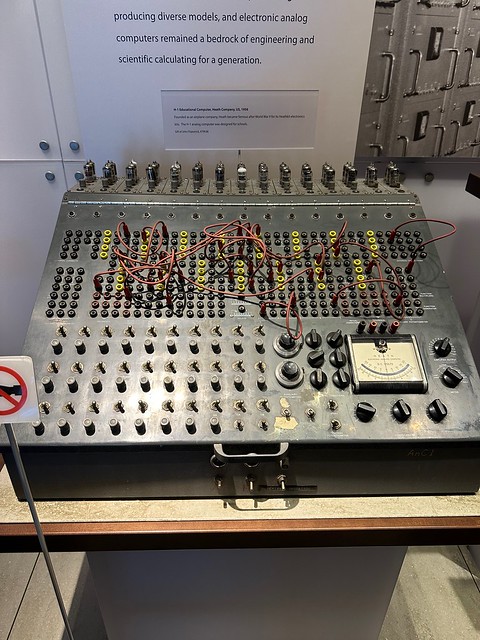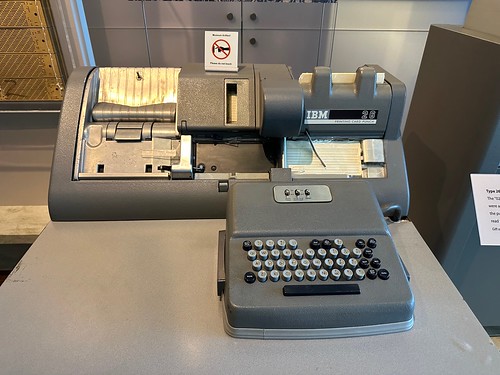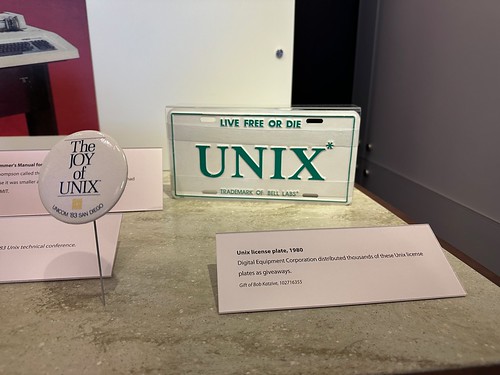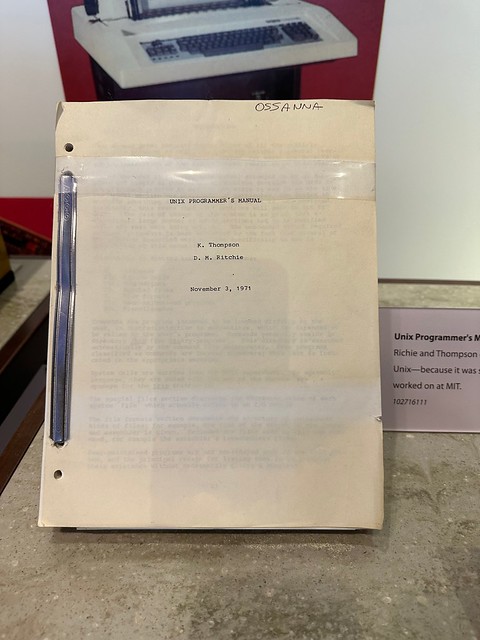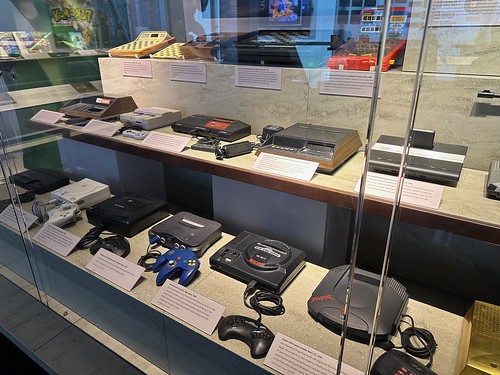Situated roughly between downtown Mountain View and Google’s corporate campus is the Computer History Museum. I had a chance to visit for the first time the other day.
The museum’s main gallery — which is quite large — begins with the abacus, and ends more or less at the modern day. As if to drive the latter home there’s a self-driving car parked inside the lobby.
Where the museum’s collection starts to feel like a good fit for its Silicon Valley locale (more on this in a moment) is when it gets into the early electronic computers: punch cards, vacuum tubes, magnetic core memory, etc. These early machines were used for processing large volumes of data for banks, tracking census data, you name it.
Then World War II came along, and with it the need for even more powerful machines.
Interestingly the jump from mechanical to electronic computing didn’t happen in one fell swoop. There were machines that bridged the gap between the two, much like how most 64-bit computers can still run 32-bit software today.
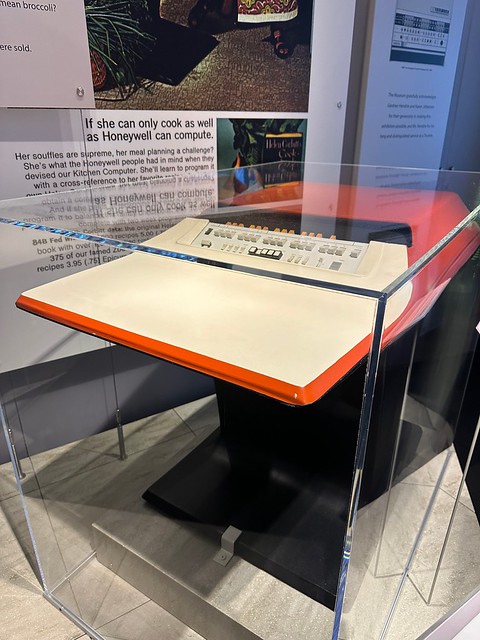
At the tail end of the 1960’s something interesting happens: computers become a consumer product for the first time. Specifically the first ever home computer, the Honeywell Kitchen Computer (see above) was released as a pricey gimmick gift for $10,000 (~$83,000 adjusted for inflation today) via Neiman Marcus. According to Wikipedia it could be used to store recipes; assuming you were willing to take the two week training course to learn to use it.
Or that was the concept at least; none were ever sold. The real purpose was to get people talking about Neiman Marcus.
Around the same time, research labs were developing not only more powerful computers but operating systems like Unix (see above) and programming languages like Fortran, BASIC, and C that made them far easier to use for engineers. It also introduced the concept of running multiple processes in isolation from one another, something we take for granted today.
From this point there’s a fairly straight trajectory to modern day computing though it would take a multi-decade long meandering path for consumer PCs to catch up.
Computers aimed at home users began to appear in the late 1970’s in basically two formats: desktop computers from companies like Apple and Commodore, and video game consoles most notably from Atari. The museum includes many such systems as well as some early arcade games.
Some of the electronics from this era are truly wacky like the short-lived fad of “robots” which were at best slow, oversized RC cars. (Side note: check out this modern review of 1985’s Omnibot 2000.) The display with these oddball toys ends appropriately enough with a Furby.

The main collection ends on the late 90’s dot-com bubble, when online businesses like Pets.com and Webvan launched to much fanfare but without any realistic business plans. The only thing these companies really had to show for their efforts is how quickly they burned through their investors’ money.
Maybe it’s simply because I lived through this era and remember it well but I think it could almost fill an entire museum. Or it could fit in nicely with the Museum of Failure.
Observations that didn’t quite fit anywhere else:
- The museum itself is located in an office building that was originally built for Silicon Graphics Inc., aka SGI. It has that in common with Google’s nearby Googleplex campus. If you’re wondering what happened to SGI, the tl;dr version is they made fancy workstations for 3D computer graphics but eventually you could do the same thing with an off-the-shelf PC, rendering (pun intended) their business obsolete.
- This is a fairly traditional museum in terms of displays and explanations, unlike The Tech Interactive in San Jose which is more focused on hands-on education for kids.
- In early photos of the first computers in use, the programmers are all women, overseen by a man — and everyone is white. These kinds of things are so strange in retrospect. Who decided to segregate it this way and why?
My recommendation: There’s a certain type of person who will be interested in this museum, and if it’s not obvious from the above I’m one of them. I think if the idea of computer history appeals to you, this museum is certainly worth checking out if you’re in the Silicon Valley area.

